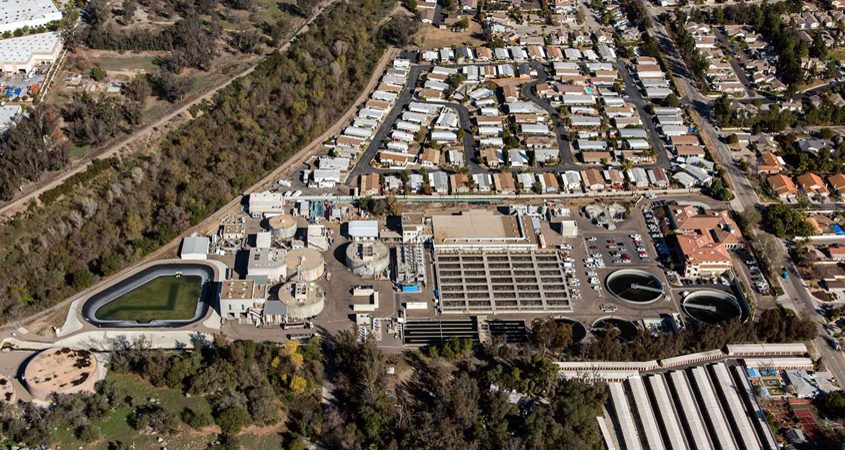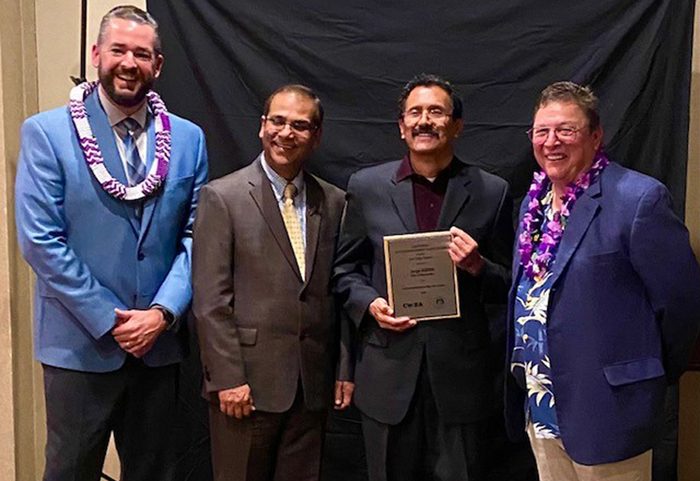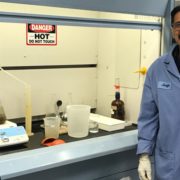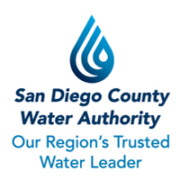The City of Escondido scored wins in three categories at the annual California Water Environment Association awards on January 29. CWEA is California’s oldest and most prominent association of water protection professionals.
Hale Avenue Facility Named San Diego Section Wastewater Plant of the Year

The City of Escondido’s Hale Avenue Resource Recovery Facility, or HARRF, won the 2022 Wastewater Plant of the Year Photo: City of Escondido
The City of Escondido’s Hale Avenue Resource Recovery Facility (HARRF) won the 2022 Wastewater Plant of the Year (Medium Category). The HARRF is designed to treat up to 18 million gallons per day from the City of Escondido and the Rancho Bernardo area of the City of San Diego. The plant operates 24 hours a day, producing recycled water for the City of Escondido, along with organic materials called biosolids for beneficial reuse in Yuma, Arizona as agricultural soil amendments.
Professional staff make use of technology to manage plant operations with real-time information. A significant outcome is the consistent production of high-quality effluent, which allows the HARRF to drastically reduce chemical use in producing recycled water.
The City of Escondido wastewater department continually strives for the most cost-effective and process-minded maintenance program to minimize emergency calls or system failures. Over the past five years, the maintenance department has seen a reduction in emergency callouts by 75% by implementing an aggressive preventative maintenance and testing program.
Collection System of the Year Award
Escondido also won recognition for Collection System of the Year (Medium Category). The City of Escondido has 380 miles of collection system pipelines, dating back to 1928. As the system ages, aggressive maintenance, rehabilitation, and replacement are imperative. The 16-person team cleans all 380 miles in the system annually. Older lines at risk of failing get priority replacement.
Where acceptable, crews rehabilitate lines with liners as a relatively inexpensive alternative to digging trenches for complete replacement. The liners have a 25- to 30-year lifespan. In 2021, 1,112 linear feet of pipeline were relined. Open trench replacement work was performed on 450 feet of pipeline.
Jorge Huitron Honored as Laboratory Analyst of the Year

Jorge Huitron (second from right) receives his award as Lab Analyst of the Year. Photo: City of Escondido
Escondido Lab Technician II Jorge Hutiron’s outstanding work won recognition with the Lab Analyst of the Year award.
Huitron conducts complex water and wastewater analyses, from bench chemistry to bacteriological assessments, sample setup, data entry, and clean-up. His work assures all water supplies are safe for users.
Huitron trains both new and seasoned Escondido employees based on four decades of experience. Colleagues comment they learn something new from Huitron, even those with years of experience.
“Incredible asset”
“Jorge has been an incredible asset,” said Ralph Ginese, Supervising Chemist, who nominated Huitron. “There really isn’t anything Jorge does not do. We are thankful to have him working with us.” Ginese said the 66-year-old veteran professional did his work so quietly over the years, it took the coronavirus pandemic to call attention to his effort, expertise, and value as a team player.
The nomination also cites Huitron’s ability to keep morale high during the pandemic through his leadership, teamwork, training, sharing, and empathy, along with ongoing consistency and reliability. “Jorge has a gleam in his eye, pride as he watches his colleagues learn from his experiences,” wrote Ginese in his nomination. “Laughter and smiles cross everyone’s face as he shares his stories of failures and success. Up until last year, this part of Jorge has been hidden. He now encompasses every attribute of what it means to be Laboratory Person of the Year.”
Each of the 20 CWEA award categories honors exceptional CWEA members and California wastewater professionals, facilities, and agencies. The program seeks to recognize outstanding achievements within the wastewater field, improve the professional status of all personnel working in the wastewater industry and related fields and stimulate public awareness of the importance of wastewater treatment to public health and the water environment.
(Editor’s note: The City of Escondido is one of the San Diego County Water Authority’s 24 member agencies that deliver water across the metropolitan San Diego region.)







